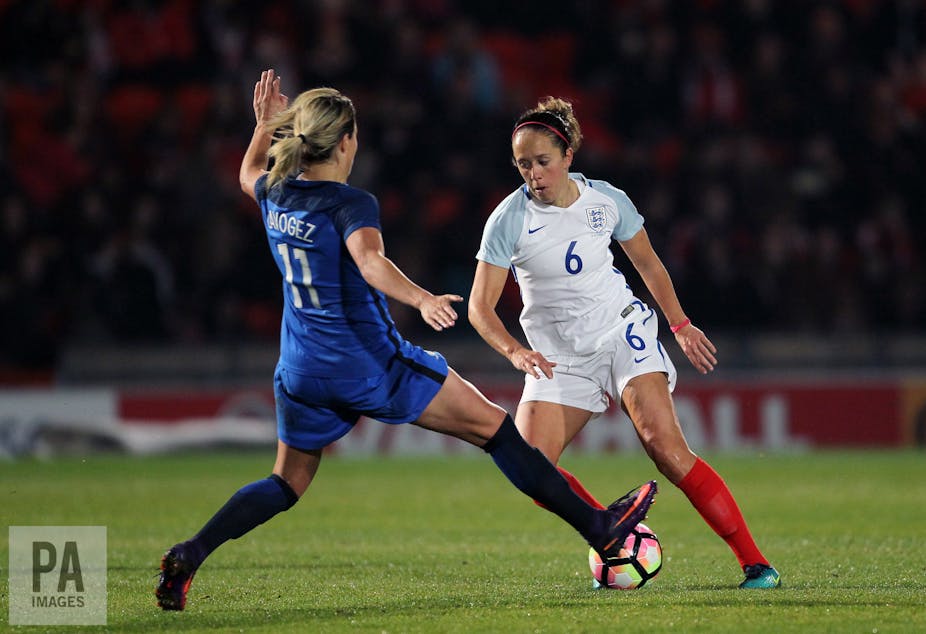For the first time, this year’s UEFA Women’s Euro tournament will be televised live in the UK on Channel 4.
Previous international women’s football tournaments have been shown on British television channels – the 2015 FIFA Women’s World Cup had a strong reception on the BBC for example – but this is the first time that Channel 4 has won the rights to one.
But simply showing the matches isn’t enough this time around. The UK needs a broadcaster that will build a new television audience for women’s football, bringing it to the forefront of the summer sports calendar – and Channel 4 just might be up to the task.
Channel 4 has a longstanding reputation as an innovative broadcaster which prides itself on producing creative and diverse content, including sports coverage. The channel was the first to bring American football to UK television screens in 1982, while their coverage of the Paralympics, and spin-off show The Last Leg, has been, on the whole, well received. With such a positive background, hopes are high that Channel 4 will have a similar impact on women’s football coverage.
The commission does not come without challenge, however. Our own research has found that British media coverage of the last Women’s World Cup in 2015 was problematic, and did not serve to build a new audience for women’s sport as anticipated.
The press firmly placed responsibility on England’s women players to prove that they, and the sport in general, were worth watching. There was little acknowledgement of the difficulties that women’s football has had to overcome due to a lack of financial resource, poor infrastructure and relative negligence on the part of the Football Association (FA).
This is in stark contrast to the England men’s team, whose failure at the 2014 World Cup was blamed by the media on a range of issues separate to actual performance: from poor coaching and team selection, to the proliferation of foreign players in the Premier League, to overly extravagant FA spending.
Though we did find that the coverage of England’s women was positive, with increasing praise of their performance as the World Cup progressed, it was often patronising in tone. Reporters struggled to talk about women’s sport without directly mentioning men’s: player Fran Kirby was England’s Lionel Messi; team mate Jodie Taylor’s idol was Wayne Rooney. And the team’s potential for success was frequently compared to historic male success in 1966 and 1990.
Channel 4’s challenge
How Channel 4 now represents the UEFA tournament, and England’s performance, could have a real impact on television audiences’ attitudes to women’s football. Pitched the right way, Channel 4 could potentially be at the forefront of a whole new media attitude to women’s football. But the broadcaster must be careful that its tone is not solely reliant on England’s performance on the pitch.
The idea that women’s football is something novel or new should have by now been dispelled. But as we’re still labouring under this myth, the UEFA air time could be used to promote the wider context of women’s football, and show just how important, relevant and popular the sport is today.
For the past six years, England’s first professional league for female footballers – the Women’s Super League – has been up and running. And, looking further back in time, there is a rich history of women’s football that Britain should be aware of. The Dick, Kerr Ladies, for example, was a factory team based in Lancashire, that played international matches in Europe in the 1920s and attracted over 50,000 people to a game at Goodison Park. Women’s football clubs even managed to survive while the FA effectively banned women’s football for 50 years until 1971. And there are strong rivalries between clubs such as Arsenal, Manchester City and Liverpool alive and well today. These are the kinds of soap opera narratives that fans of men’s football are well accustomed to, and they need to be told in women’s football too.
In broadcasting the Women’s Euros, Channel 4 needs to uphold its standing as a distinctive broadcaster by offering audiences something they haven’t seen before. It needs to challenge its audience to understand women’s football on its own terms, and must unpatronisingly praise good play and criticise poor play as warranted. It should convey the culture and traditions of women’s football and, most importantly, avoid lazy comparisons with the male game.
So are they up to the challenge? We’re going to have to wait for kick off to find out.

